
Sol LeWitt: Lines Both Large and Small
Julie Warchol is the 2012-2013 Brown Post-Baccalaureate Curatorial Fellow in the Cunningham Center.
This spring we have two wonderful examples of Sol LeWitt’s elegant geometric compositions on view at Smith College. At SCMA, the current Cunningham Corridor installation Less is More: The Minimal Print (on view until May 5, 2013) contains a small LeWitt print from titled Circles (1973), while Burton Hall, home of the Smith College Mathematics department, houses LeWitt’s Wall Drawing #139 (Grid and arcs from the midpoints of four sides) (1972). Each represents important and complementary characteristics of his work: simple and complex, small and large, printed and drawn.
Sol LeWitt, who coined the term “Conceptual Art,” created many prints, drawings, and “structures” (his term for sculpture) which are more dependent on ideas and logic than visual qualities or expression. LeWitt envisioned his role in the creative process to be akin to that of a musical composer or an architect, as his work is often based on written plans that are physically executed by others. He built a seemingly infinite number of compositions using a basic vocabulary of lines, arcs, and grids. When these simple geometric components are combined, they transcend their rudimentary nature to become complex abstract patterns. Anonymous in character and detached from emotion or feeling, LeWitt’s work is nonetheless alluring and graceful.
As LeWitt began making his famous wall drawings in 1968, his work became increasingly ephemeral and collaborative. Beginning in 1970, printmaking provided LeWitt with the means of producing more permanent and reproducible images, while allowing him to relinquish control of the final appearance of the work through his collaboration with master printers. Like many of his prints, Circles (1973) was produced by a master printer from an original LeWitt drawing. With its black and gray lines, which resemble pen ink and pencil marks, this lithograph retains the impression of the drawing. The concentric circles and converging lines are not as exact and precise as they first appear. Contrary to the mechanical processes available to printmaking, LeWitt embraced subtle hand-produced imperfections such as the wavering lines in Circles.
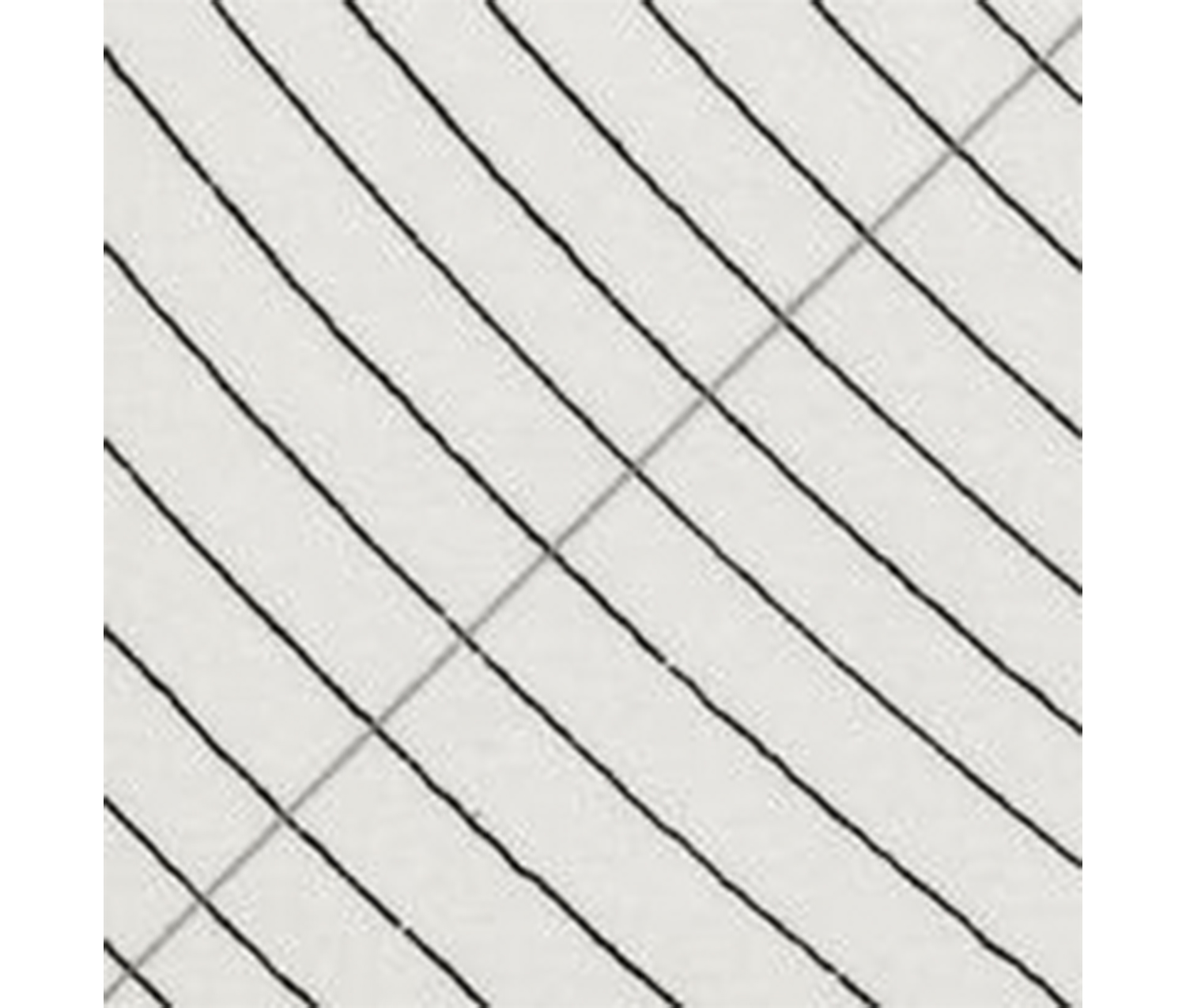
Detail of Sol LeWitt’s Circles (1973) showing hand-drawn imperfections which translated into the print.
In January 2013, Wall Drawing #139 (Grid and arcs from the midpoints of four sides), an important early LeWitt wall drawing executed in black pencil, was installed on the third floor of Burton Hall. Integral to LeWitt’s artistic philosophy, his wall drawings are designed to be executed by anyone following his simple plans. Characteristic of LeWitt’s early work, its understated pencil-drawn style is similar to Circles but its grand scale and complex composition of overlapping lines and arcs makes its abstraction more apparent. As in its previous installation in the Museum in 2008, Wall Drawing #139 was executed by Roland Lusk of LeWitt’s New York studio with the assistance of three Smith College students: Clara Bauman ’13, Mingjia Chen ’15, and Clara Rosebrock ’16. This impressive drawing was installed in just two weeks using simple tools such as pencils, rulers, compasses, levels, and plumb lines.
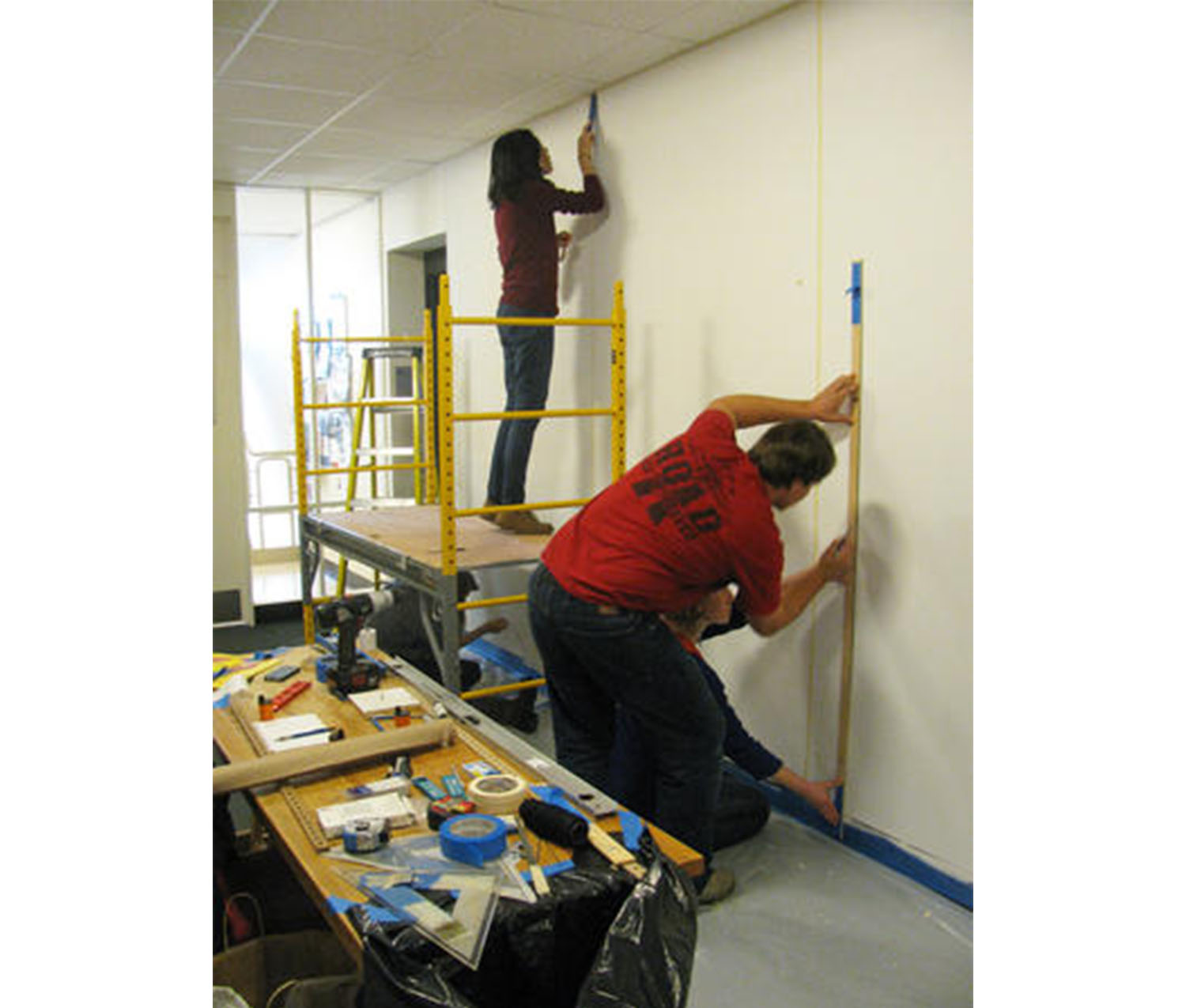
Lusk and students draw the initial grid of Wall Drawing #139 in Burton Hall, January 2013. Photography by Julie Warchol.
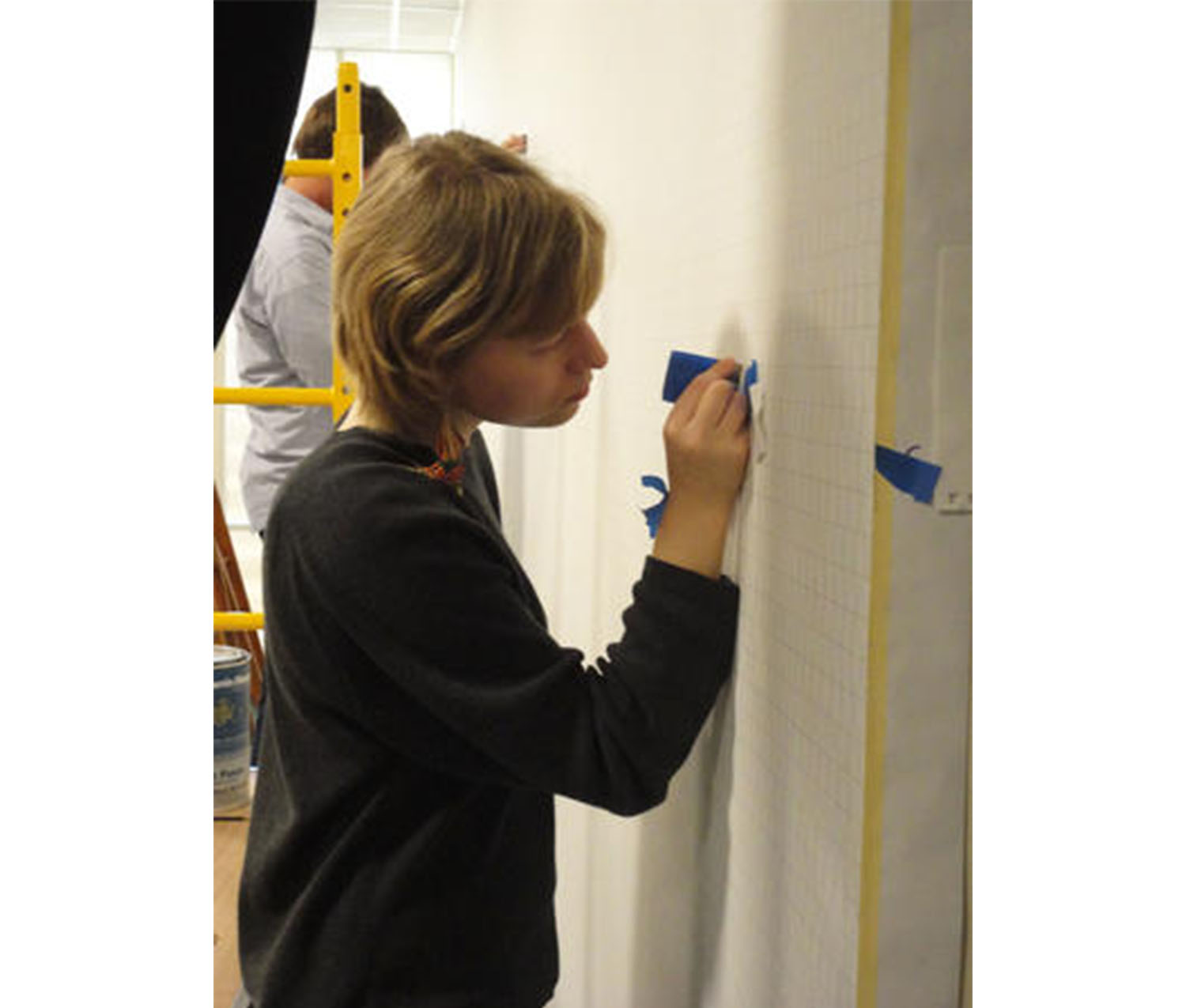
Clara Rosebrock cleans the lines and smudges on Wall Drawing #139, January 2013. Photography by Julie Warchol.
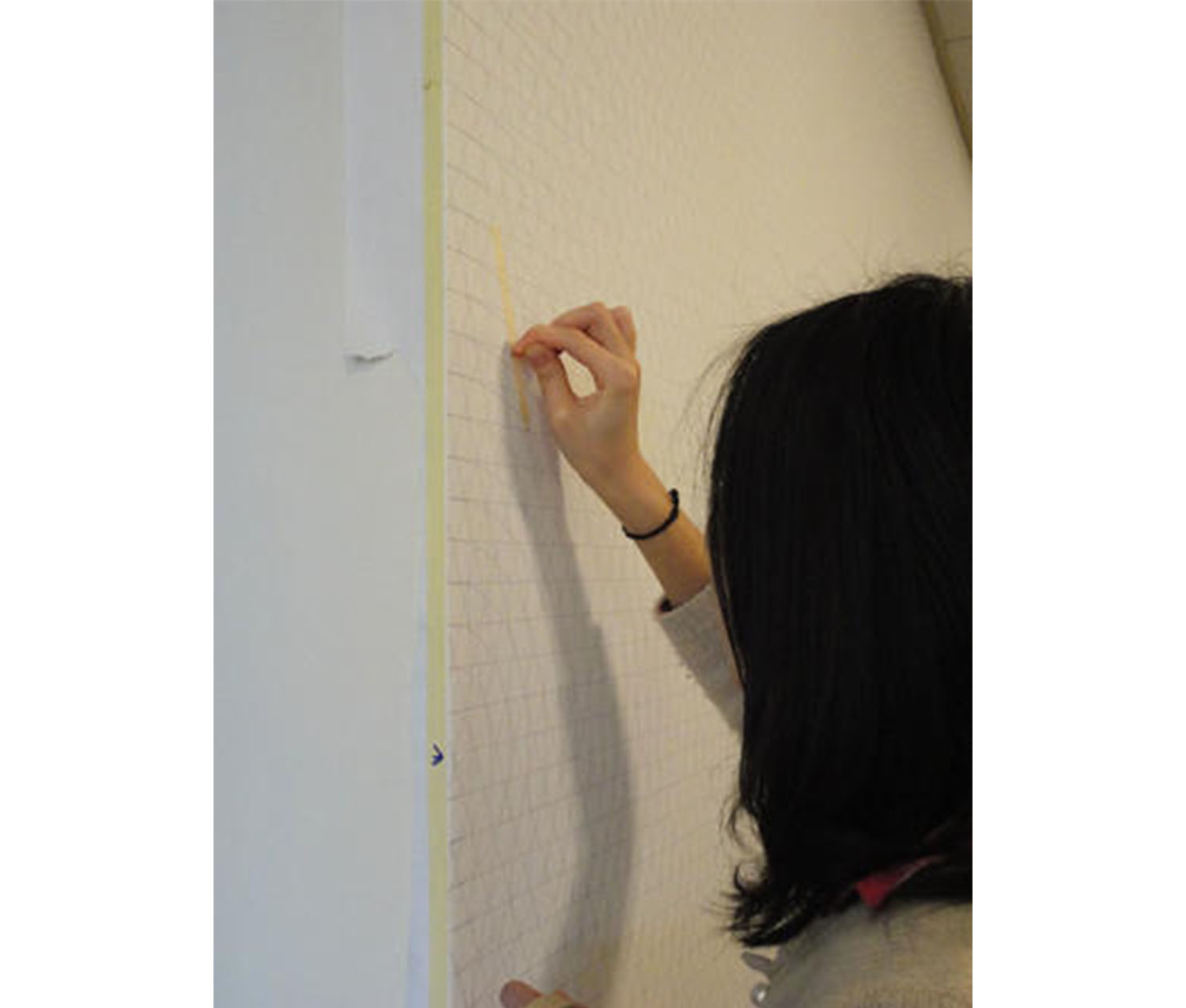
Mingjia Chen evens out the darkness of the lines in Wall Drawing #139 using masking tape, January 2013. Photography by Julie Warchol.
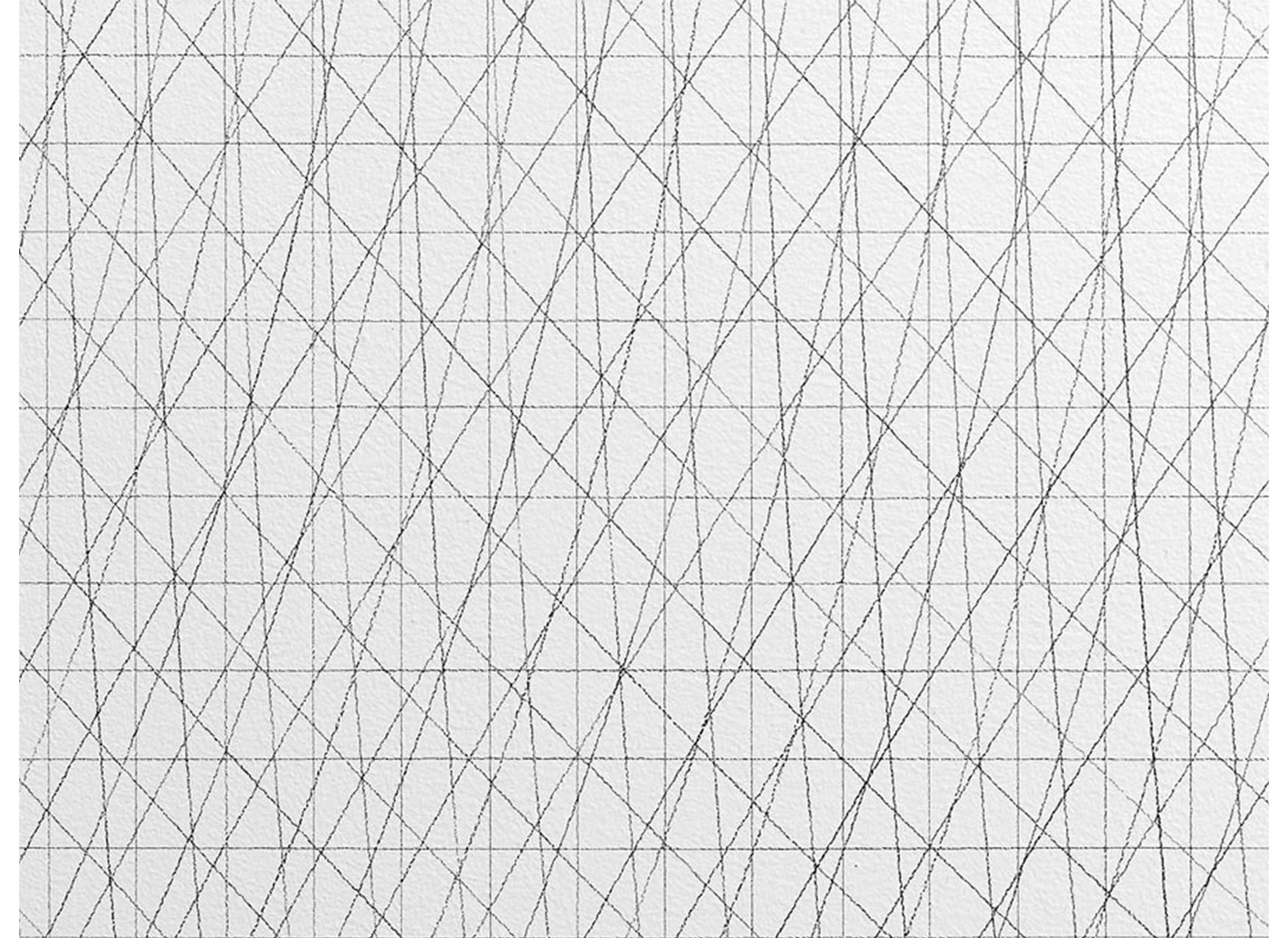
Detail of Wall Drawing #139 (Grid and arcs from the midpoints of four sides). Photography by Petegorsky/Gipe. SC 2000.27.
Click here to read more about the 2013 installation at Burton Hall.
Join us on Thursday, February 28 at 4PM in Burton Hall in front of the LeWitt’s Wall Drawing #139 (Grid and arcs from the midpoints of four sides) to hear different perspectives on the current installation!